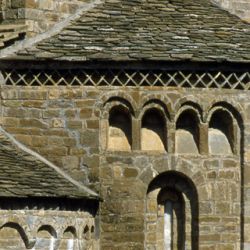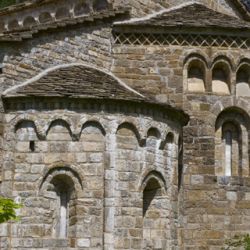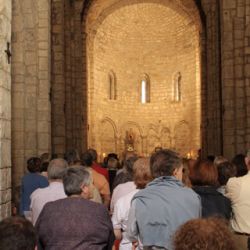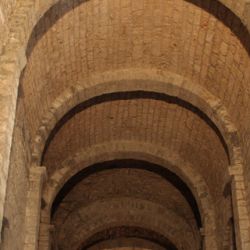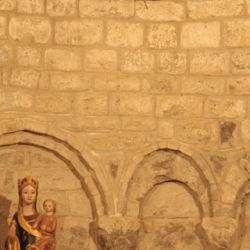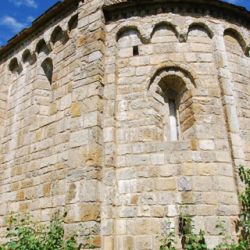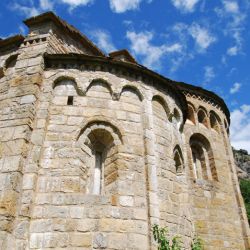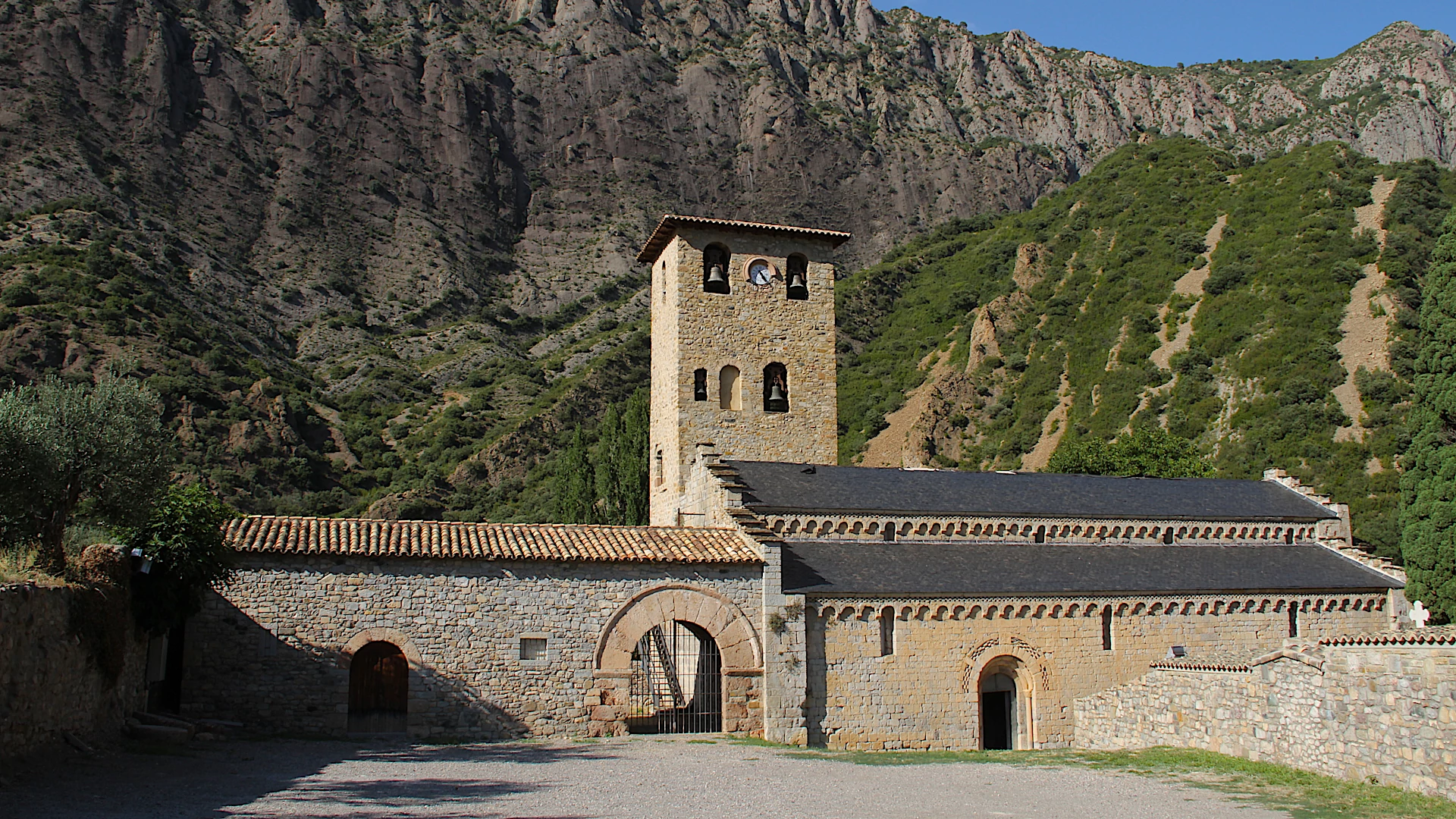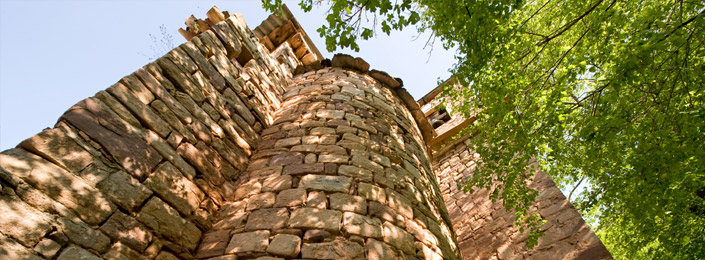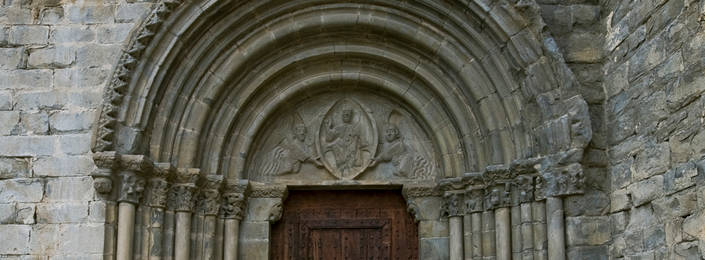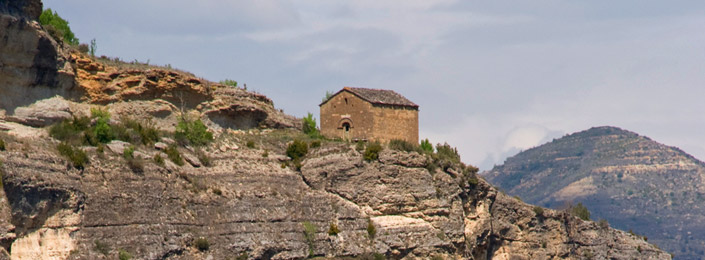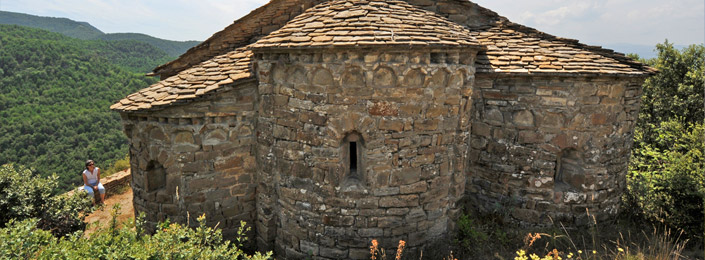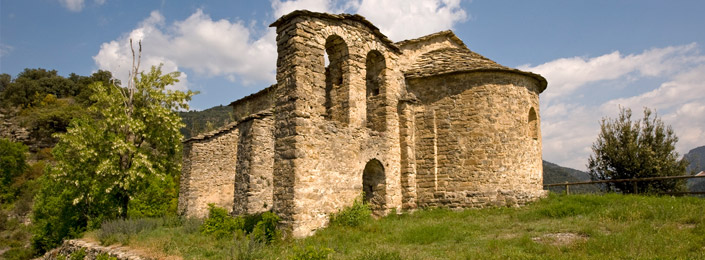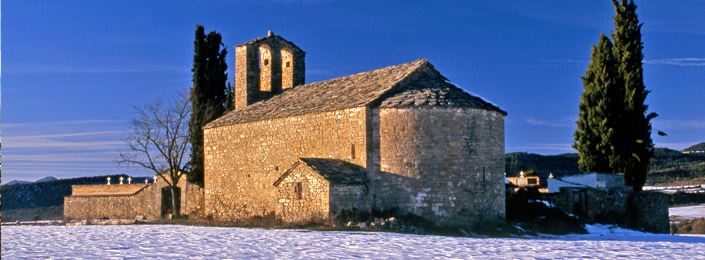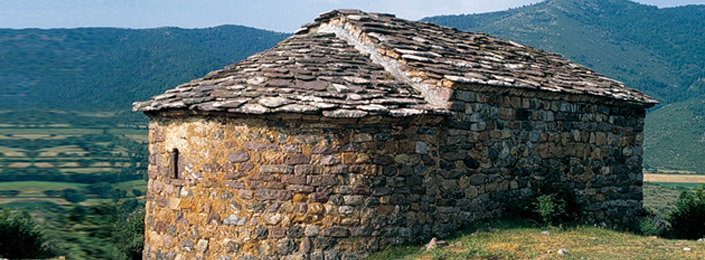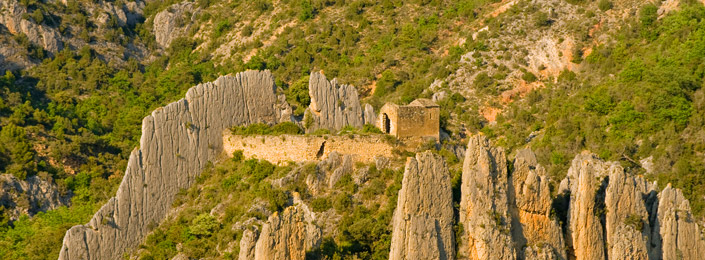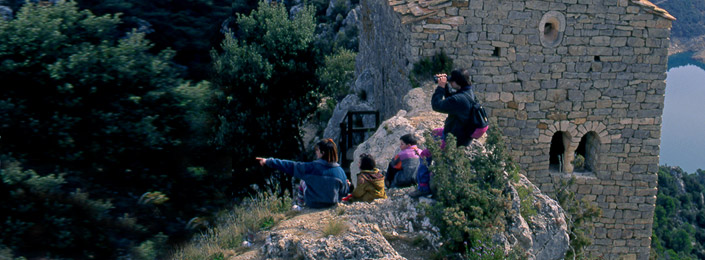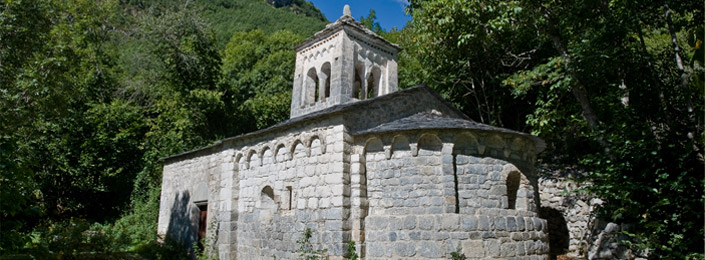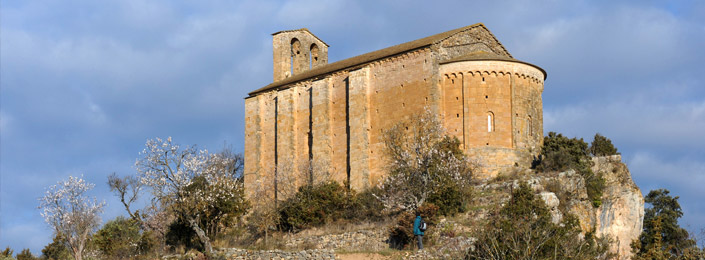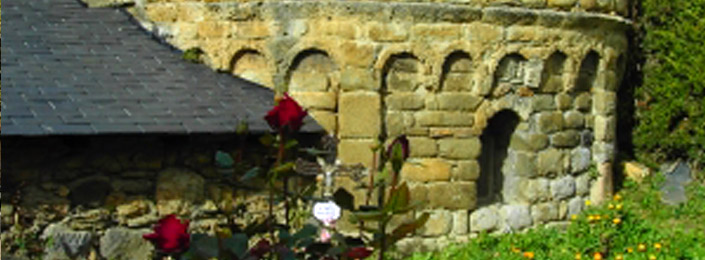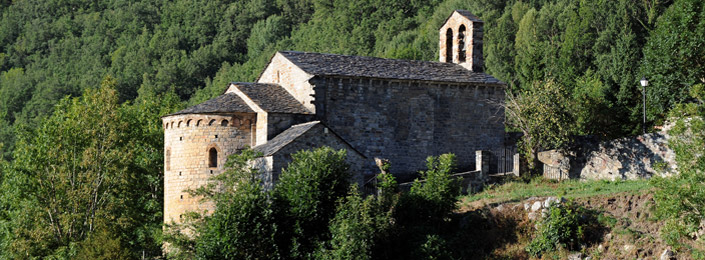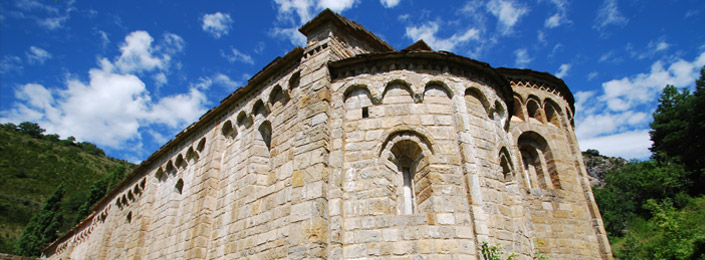
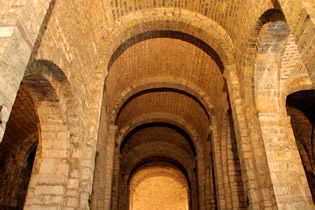
The monastery existed at least since the ninth century, its first documentary mention of the year 871. It was destroyed in the raid of Abd-al-Malik, which also destroyed the town and cathedral of Roda. In 1076 the monastery, who had gone through a period of decline after the death of Abbot Galindo (1025-1030), is reduced to the status of priory and submitted to the monastery of San Victorián by Sancho Ramírez. From this point, unless an interval of relative strength in the sixteenth century, played a secondary role in the history Ribagorzana, far from the role that had been between the ages IX and XI.
Its main building is the church of Santa Maria, Lombard Romanesque style, the structure provided in a basilica plan with three naves divided into central apse decorated with bows. Inside is the image of the Virgin of Obarra. In the upper palace is located south abbey and the church of San Pablo.
There was a monastery in medieval bridge over the Isábena which gave access to the area of the monastery, but was destroyed by a flood of the river in 1964, now rebuilt next to a popular building used for youth activities.
The monastery was declared a Site of Cultural Interest in 1931. It is said that the building's architecture allows astronomical observation and offers a Christian calendar entry ever in the moonlight by the central window of the apse, in the second full moon of autumn.
|
|
restricted access |
|
Declared of Cultural Interest Openning hours: From tuesday to saturday at 12.45h and at 18.15h. And sunday at 13h You visits accompanied by the reporter of the OIT Beranuy. Price: 3€ Telephone: 974 347 128 It is accessed from the A-1605, in the municipal term of Beranuy. |
